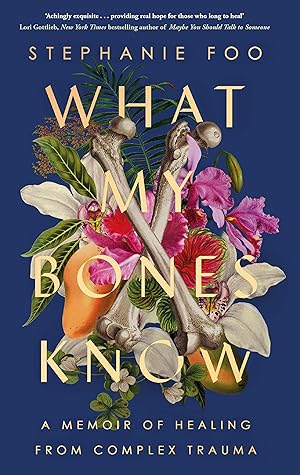More on this book
Community
Kindle Notes & Highlights
Read between
January 1 - April 6, 2025
I try half-heartedly, but I always feel corny doing this stuff.
“When the sky falls, use it as a blanket,”
Hatred, I learned quickly, was the antidote to sadness. It was the only safe feeling. Hatred does not make you cry at school. It isn’t vulnerable. Hatred is efficient. It does not grovel. It is pure power.
Achievement was my constant. My comfort.
I told myself, I am not a girl. I am a sword.
I kept spinning around and around, finding myself back where I started—watching people’s backs as they walked out the door.
why did nights with me always have to end in disaster?
My anger was my power.
An act of radical forgiveness was the only thing that might rip me out of the loop. And so, one by one, I counted the people I hated and told myself that I could not know their struggle.
I practiced punching down my anger like a ball of dough, flattening it out.
when I made a mistake, the dread crept into my field of vision and I couldn’t see anything except my mistake for an hour, maybe even a day.
Always, always: I tried to be good.
I tried wearing heels and dress pants.
It’s okay to have some things you never get over.
“The important thing was learning how to take good care of myself.
What privilege, to just let life fall to the wayside, to stop working and pretending and just fall apart. To let my grief-swollen brain split at the seams and spend my days crying and sitting in therapy and drinking lemonade in meditative silence
when we live through traumatic experiences, our brains take in the things around us that are causing the greatest threat, and they encode these things deep into our subconscious as sources of danger.
people who suffered from childhood trauma have significantly shortened telomeres.
like anyone who has been handed a death sentence, I underwent a mini existential crisis.
sometimes it’s the attempt that matters, you know, more than the success.”
in order to heal, you will need to get help.
Just because the wound doesn’t hurt doesn’t mean it’s healed.
Some sources say it takes three to five years to feel substantially healed from C-PTSD,
everyone ignored me, so I shut up.
The literature says this is normal for traumatized people. Experts say it’s all part of the three P’s: We think our sadness is personal, pervasive, and permanent. Personal, in that we have caused all the problems we face. Pervasive, in that our entire life is defined by our failings. And permanent, in that the sadness will last forever.
The default mode network is so called because if you put people into an MRI machine for an hour and let their minds wander, the DMN is the system of connections in their brains that will light up. It’s arguably the default state of human consciousness, of boredom and daydreaming. In essence, our ego.
people who suffer from depression, anxiety, or C-PTSD have overactive DMNs.
most efficient cure for an overactive DMN is mindfulness.
When our ego is silenced, there is a dissolution of the relationship between self and other.
second chances did not always have to be fought for—they could be taken in handfuls for free like after-dinner mints.
I was approaching “wellness” with the same obsessive, perfectionistic tendencies I’d brought to my job. This was no less disordered than being a workaholic, and the pattern had a distinct echo: moments of intense joy through achievement followed by anxiety over finding my next success.
“Gratitude turns what we have into enough.”
The entire point of America was that you didn’t always have to understand; the system could be trusted to function on its own.
Can a mentally ill woman ever be trusted with her own story?
If it’s all my fault, then I can change it. I can fix it.
Ugly things become uglier in the dark.
“When the sky falls, use it as a blanket,”
The past is always here, haunting our homes, standing over us at night.
traumas we experience can be passed on to our children and even our grandchildren.
The epigenome on top of noncoding DNA is very sensitive to stress and the environment.
Why did I always have to do the work?
“You are suffering, but you are trying so hard.”
“It’s okay to be sad. You won’t be sad a week from now. I love you, and you are doing your best,”
Trauma isn’t just the sadness that comes from being beaten, or neglected, or insulted. That’s just one layer of it. Trauma also is mourning the childhood you could have had.
women who have suffered from childhood trauma were 80 percent more likely to develop painful endometriosis.
Women are more than twice as likely to have PTSD than men.
during the mid-luteal phase (the second half of the menstrual cycle after ovulation), we have higher levels of emotional arousal and more connectivity between emotion and memory.
stress hormone and sex hormone systems are very intimately connected.
Children who experience trauma are more likely to hit puberty earlier.
“The essence of what trauma does to a person is it makes them feel like they don’t deserve love,”


